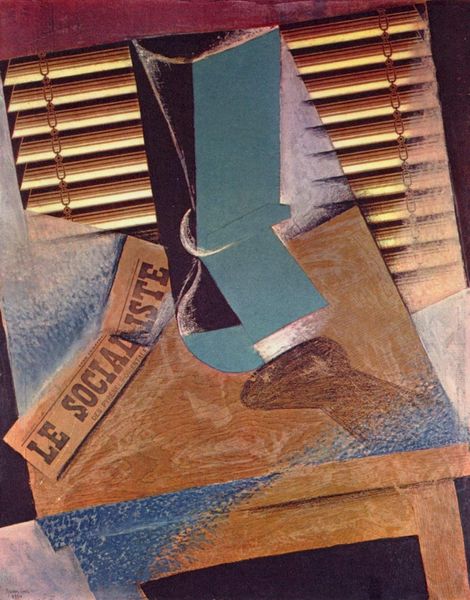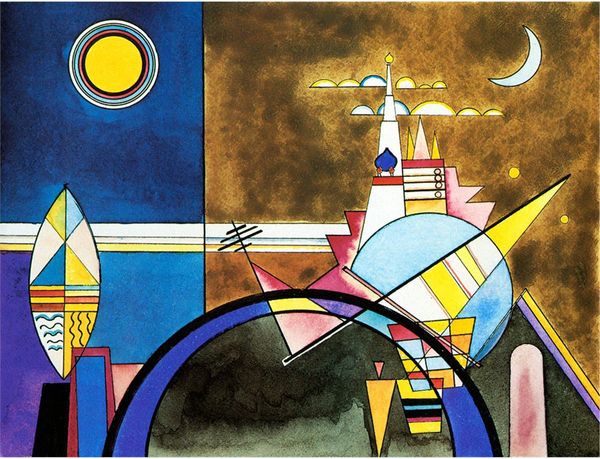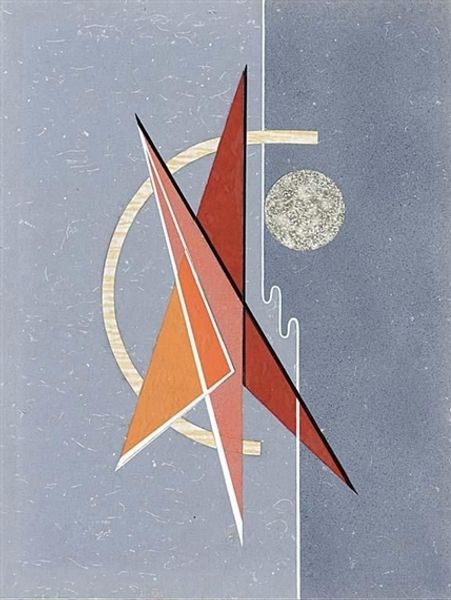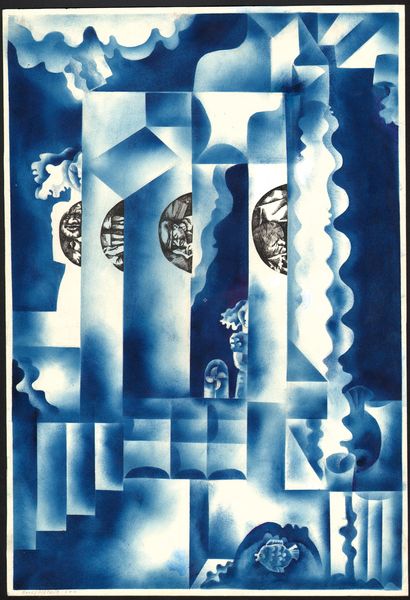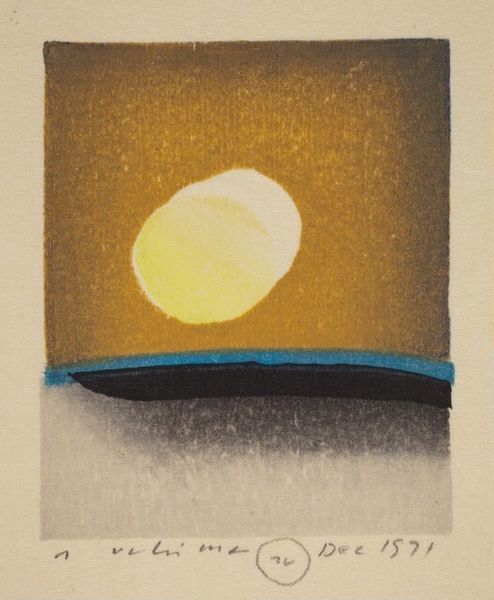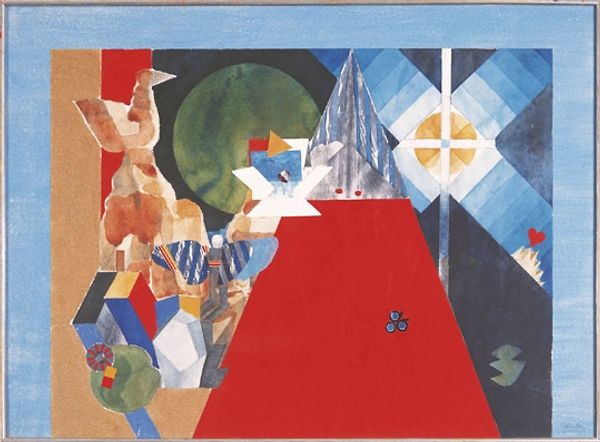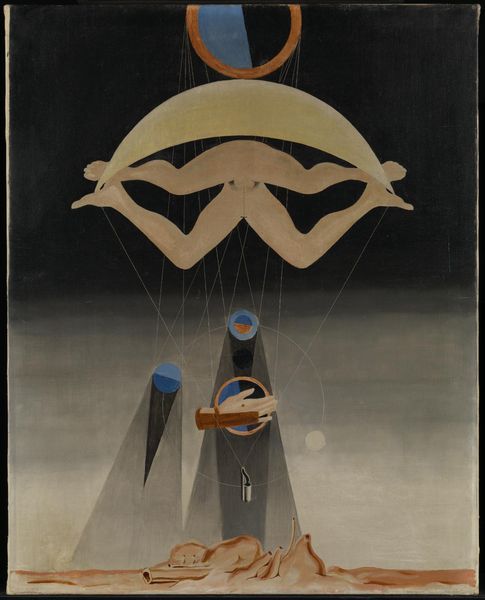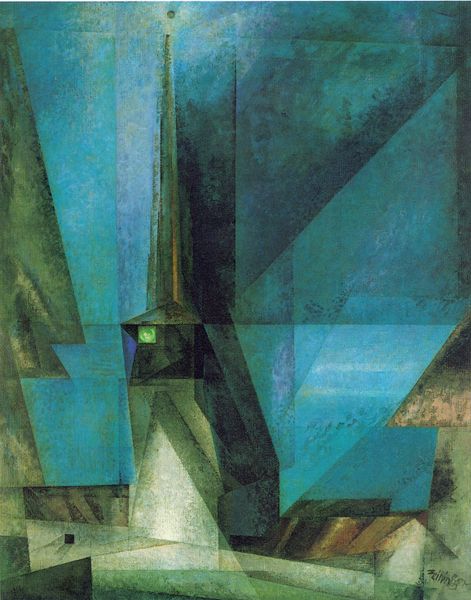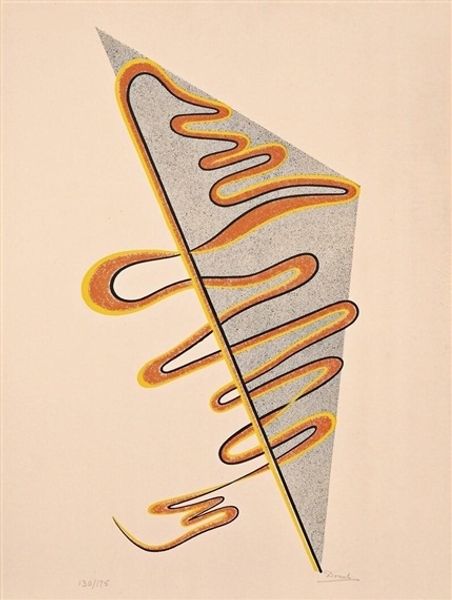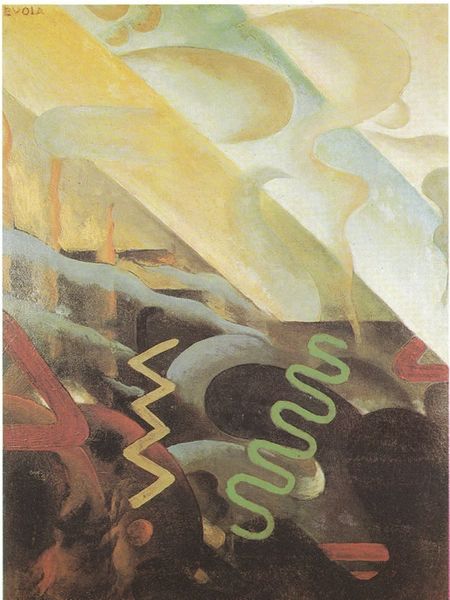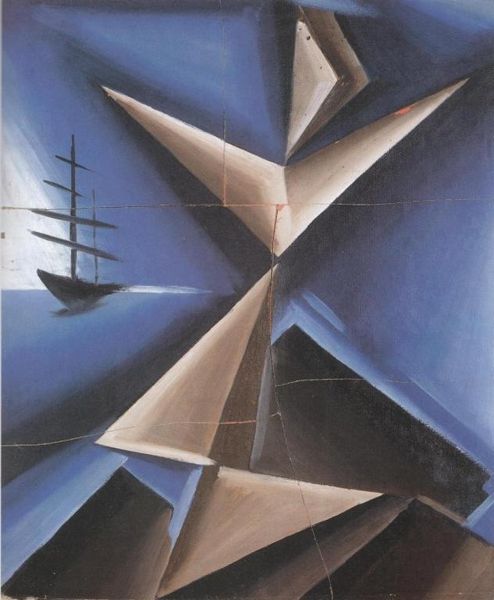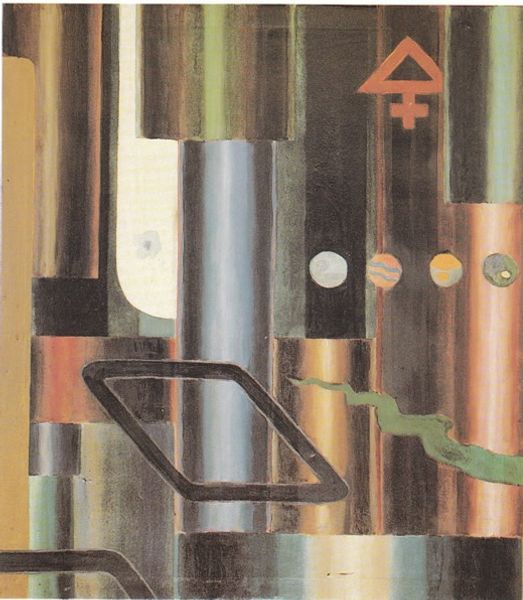
Copyright: Agnes Lawrence Pelton,Fair Use
Editor: Here we have Agnes Pelton’s "Future," created in 1943, using watercolor. It gives me a somewhat unsettling but hopeful feeling, with these architectural shapes rising from a seemingly barren landscape. What do you see in this piece? Curator: I see a powerful meditation on hope and reconstruction in the face of immense societal upheaval. Painted during World War II, "Future" is not simply an abstract landscape. It reflects the anxieties and aspirations of a world grappling with unprecedented destruction and imagining what comes next. Consider the spiritual and utopian movements of the early 20th century. Do you see how those resonate in Pelton’s symbolism? Editor: I can see that a little... The... towers? Almost feel like monuments, but ethereal ones. Curator: Exactly. Pelton was deeply interested in spiritualism and theosophy. The towers can be read as symbols of humanity's potential for spiritual ascent, built upon the ruins of the old world, perhaps suggesting a future informed by the lessons learned through trauma and collective action. The light emanating from the top, contrasting with the darkness, points to something beyond material reconstruction, doesn’t it? How does that intersect with her position as a female artist working within a predominantly male artistic landscape? Editor: I hadn’t thought about the context of it being painted during the war. Seeing it as this... call for a better future, maybe it’s about reclaiming agency after immense loss, for everyone, including women in the art world. Curator: Precisely! It’s about envisioning agency amidst systemic barriers. By embedding symbols of hope within the language of abstraction, Pelton was actively shaping the narrative of what could come next. The future isn’t simply something that happens to us, but something we actively create. Editor: That’s fascinating. I initially saw the painting as purely abstract, but knowing the context really shifts everything. I appreciate how this helps see the social commentary, rather than simply personal impressions. Curator: And I think by questioning what appears obvious, we gain an important, even activist perspective. It’s about understanding our history and making it work toward an equitable future for all.
Comments
No comments
Be the first to comment and join the conversation on the ultimate creative platform.
